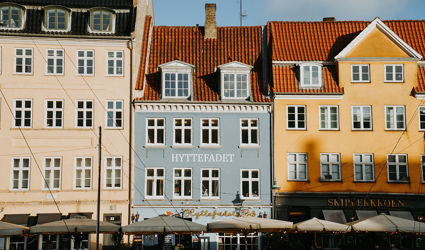Monday October 24, 2016
Jingdezhen, 24.10.2016
MONDAY OCTOBER 24, 2016 – JINGDEZHEN
Today’s first goal is the shard market which is part of the porcelain and antiques market of Jingdezhen (Chinese name: Taoci guwan shichang). Anne Gerritsen, Professor of Kikkoman Chair for the study of Asia-Europe Intercultural Dynamics, with special attention to Material Culture, Art and Development introduces in her article on the NIAS website (June 25, 2014) this market as follows:
“It is no coincidence that the vast majority of the antiques for sale are pieces of ceramics. This weekly market takes place in the southern Chinese town of Jingdezhen, which has been known for many
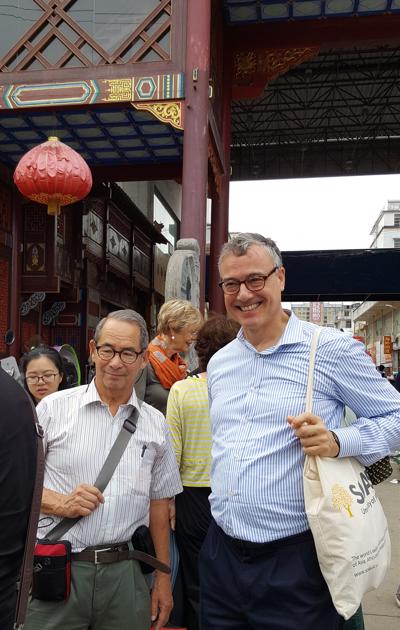
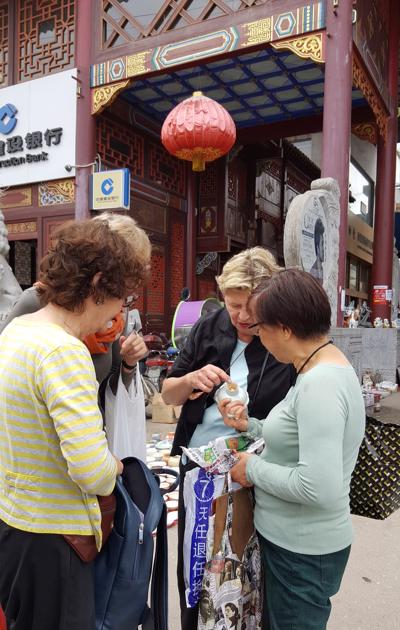
centuries as the country’s porcelain capital. The resources found nearby included both the very white porcelain stone (known as bai dunzi or petuntse) and also clay from the Gaoling mountains (known today as kaolin). When blended together and fired at temperatures of over 1300?C, the molecular structure of these materials changes and they fuse together to form porcelain. Jingdezhen was by no means the only or even the first place where porcelain was produced in China, but the abundance of natural resources and the accumulation of technical knowledge and skill in the area meant that it became the main site of porcelain production for the imperial palace. By the mid-sixteenth century, Jingdezhen was producing ceramics on a massive scale not only to meet imperial demand (as many as hundreds of thousands of pieces were ordered on an annual basis) but also in response to growing demands from overseas.“
The shard market is a paradise for porcelain lovers; shards with flowers, birds, emperor’s marks tempt the - potential - buyer. There may be some fake shards for sale, but most of the shards will have been gathered in the hills and in ancient kilns of sites surrounding Jingdezhen.
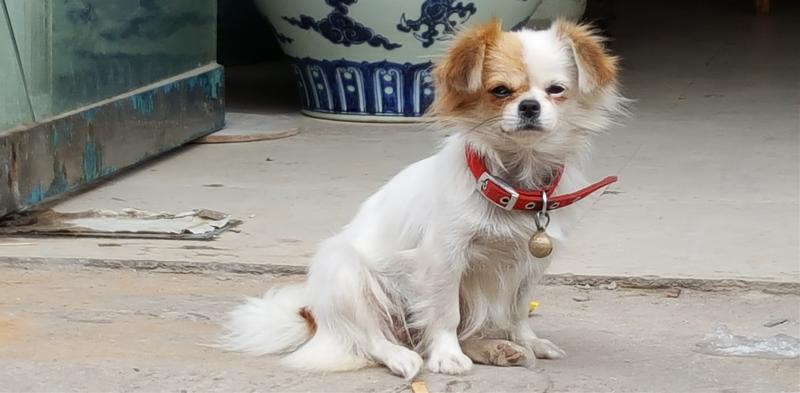
The market shards are laid out on cloths in the street, all for sale. The merchants lift the shards up in the air to show them to you when you go by. They make sure the eye of the strolling public is caught by the strange and wonderful shards in their stock. There is so much noise and buzzing at this market, the resonation under the arches is enormous. There are antique shops here too, such as for furnitures and carpets.
It is very hot here. I buy a small bird feeder; I remember I saw a similar but bigger one at an exposition in the Princessehof Museum in Leeuwarden. The form is globular, paws are carved in, the eyes are relatively big and stand out, it looks like a frog with big eyes; the thin glaze is green with lots of bubbles; the stoneware is orange; it has little decoration and it is unsigned. The spirit of poverty is revealed in its simple beauty. Poverty and art: Soetsu Yanagi describes the Buddhist philosophy of emptiness as follows: “Blessed are the poor in spirit…it urges the renunciation of all dualistic opposition and characterizes the sphere of nothingness by the name of poverty.”
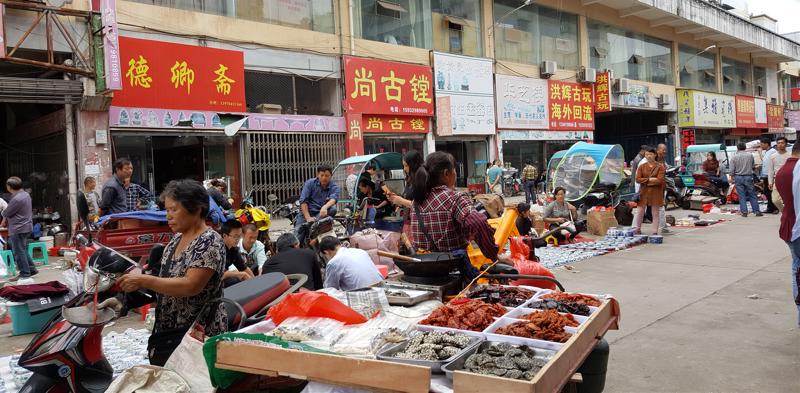
I could also quote a famous poem by the Zen monk Hsiang-yen:
Last year’s true poverty was not yet true poverty.
This year’s true poverty is at least true poverty.
Last year there was nowhere to place the gimlet.
This year the gimlet itself is gone.
In western jargon, one might say, that serene austerity, dignity and stoicism must be shown under all circumstances.
After an hour, the bus picks us up; we are heading for the Archaeological Department of the Ceramics Institute of Jingdezhen, where a professor and three of his students (experts on excavated shards and porcelain) will meet us, to give an explanation about the archaeological findings of Jingdezhen porcelain.
The first objects that we see at the exhibition are shards and pieces of modern porcelain from various kiln sites - scattered on the ground of the first floor’s corridor. In another room everything is more organized: pots, jars and plates are shown in vitrines. It is hot and humid here. The photos I take seem to be blurred by the high temperature.
Then we meet with professor Jiang Jian Xin and Dr. Liu Xinyuan, who welcomes us and guides us through a room, together with some of his researchers. Dr. Liu carries a nikon and makes pictures. It is the same man who is visible on pictures with his camera in a travel diary of 1992 on Gotheborg.com!
Then Jiang Jian Xin, head of Jingdezhen Institute of Ceramic Archaeology meets us and a famous Kraak porcelain researcher. He speaks in Chinese language; it is translated by his students. The group is absorbed in the beauty and the technicalities of the exposed wares. Lots of blue-and-white Kraak, celadon; Kangxi ware, Jingdezhen plates, blue-and-white brush pots, blue-and-white bowls,

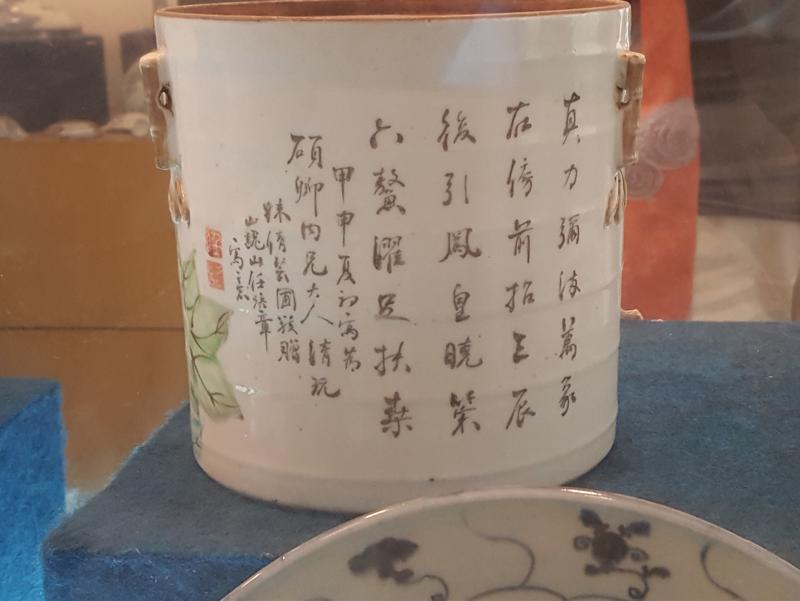
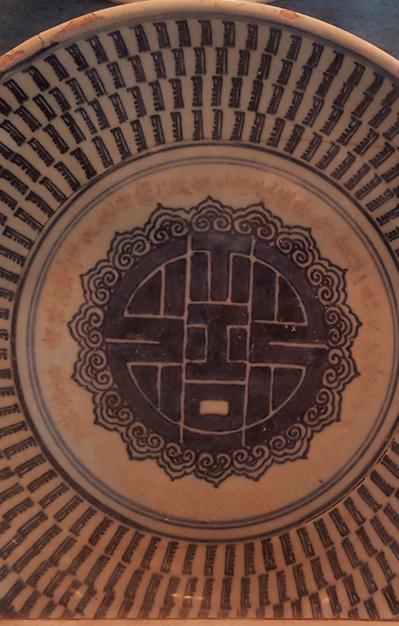
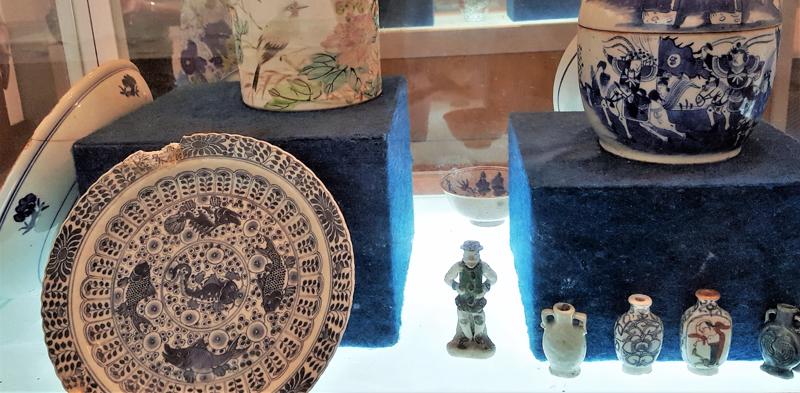
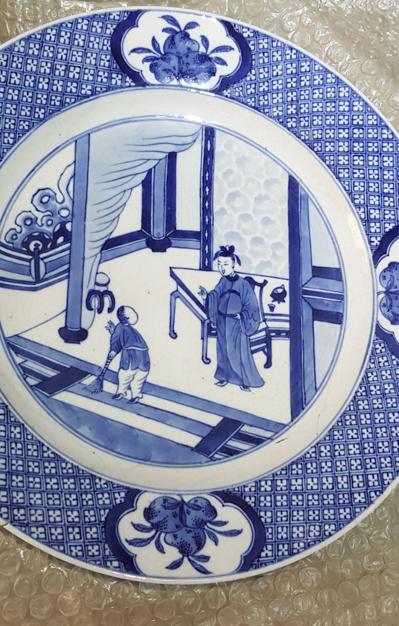
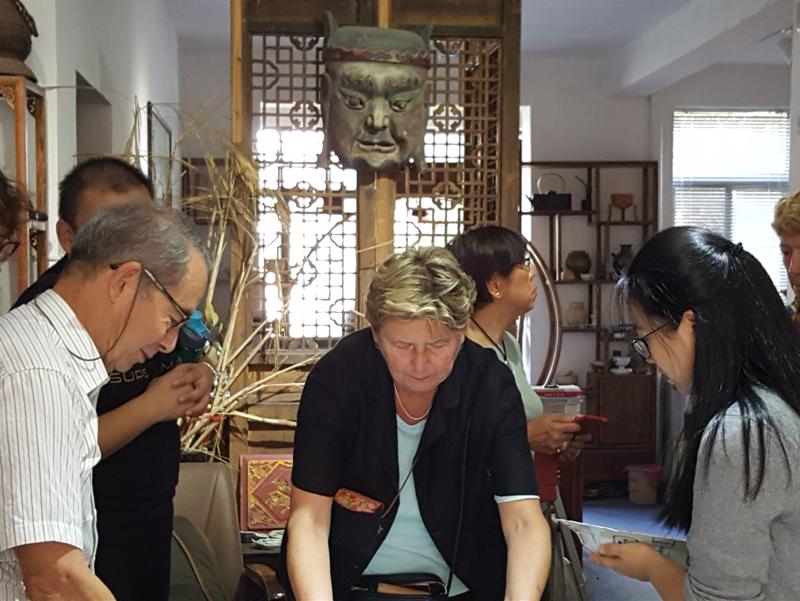
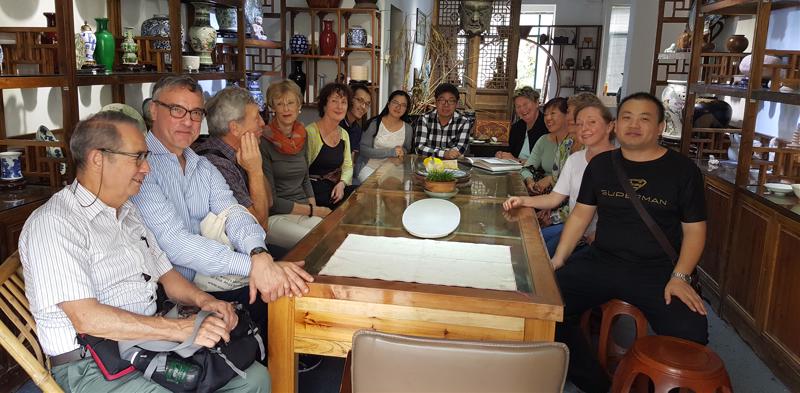
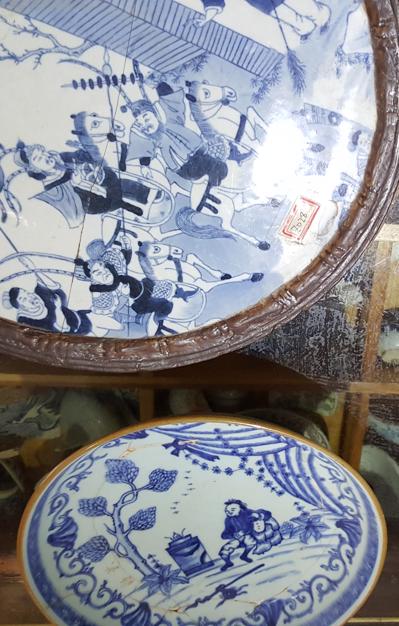

Yuan, Ming and Qing. Christine, who wrote a book titled “De Wittte Draak”, is intensely studying objects found in a shipwreck.
Too soon we are guided outside, to the bus. We will pay a visit to a special exhibition in the neighborhood of Jingdezhen. There we see Kraak again, Qianlong vases and Ming plates, and on a bed covered with books on ceramics we find “Ceramic finds from Jingdezhen Kilns” by Dr. Liu Xinyuan, who is right here with us in the room! I would like to stay a long time here; we are allowed to touch everything – assisted by the students. In our group, most of us are rather direct in touching all the wares: with so much experience we will not break anything. I keep my distance though, not wanting to do any harm.
We spend an hour in the exhibition room; this place has more books on porcelain than one can imagine. The Professor shows us he has access to probably the best library with books on porcelain in China.


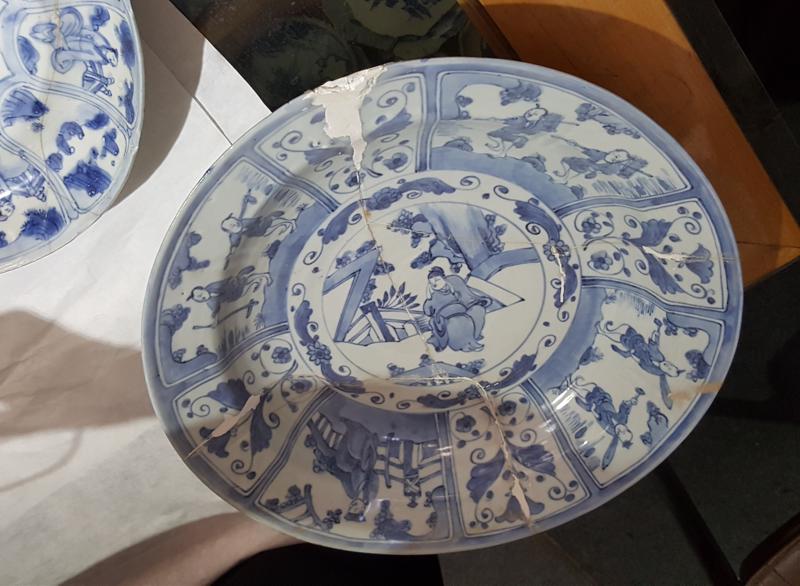

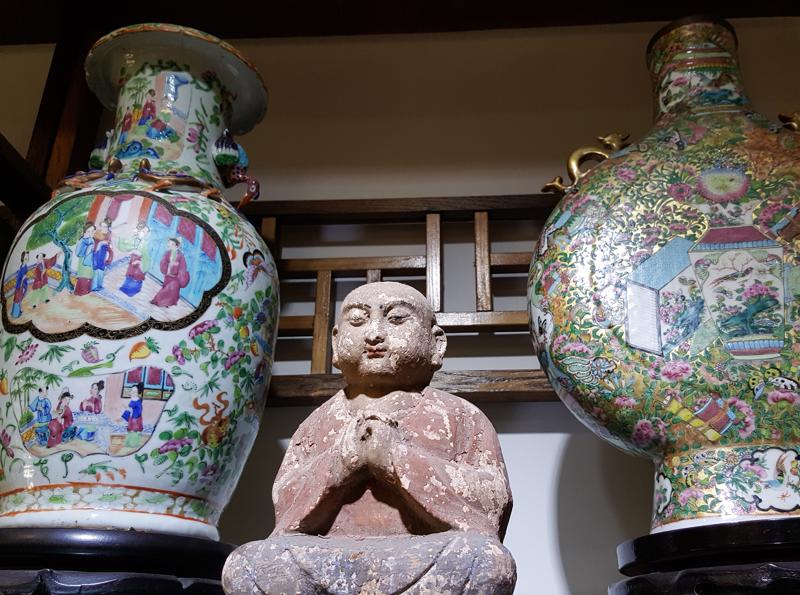
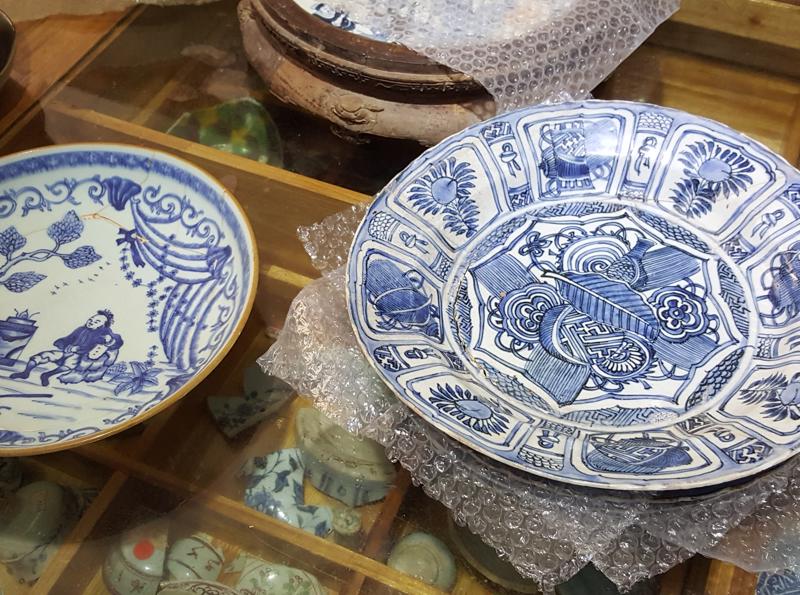
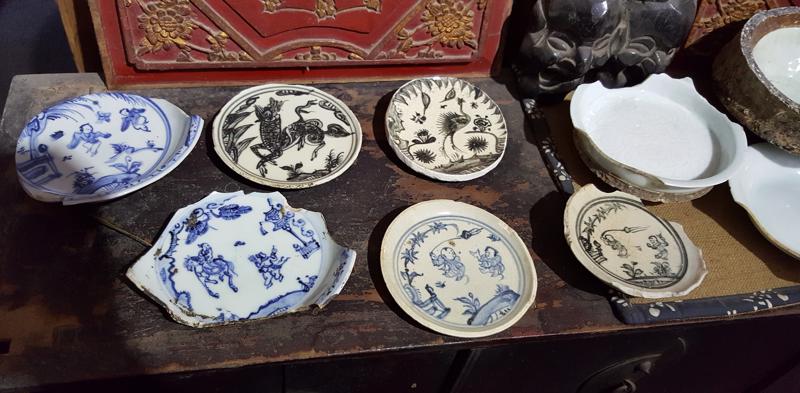
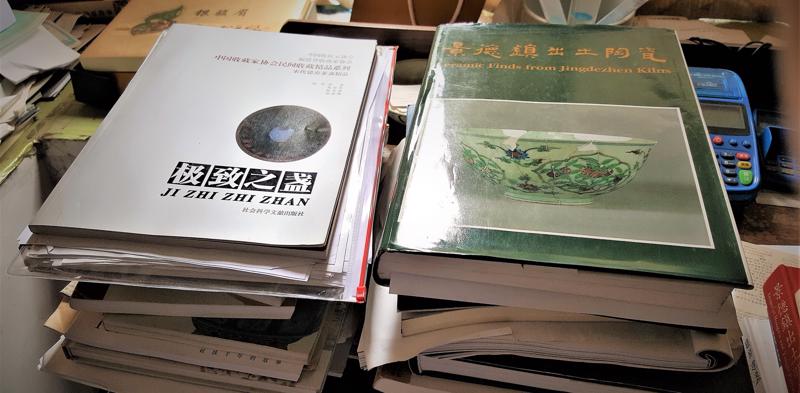

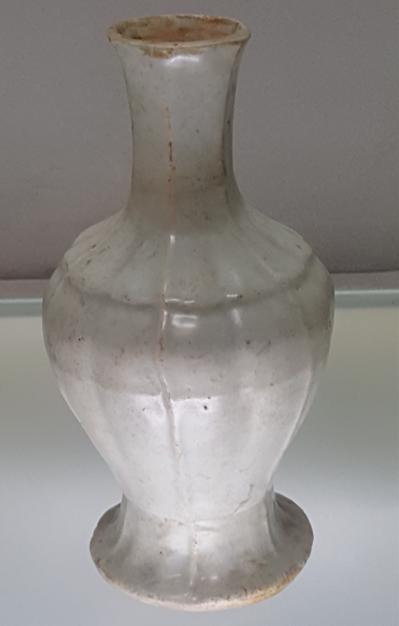
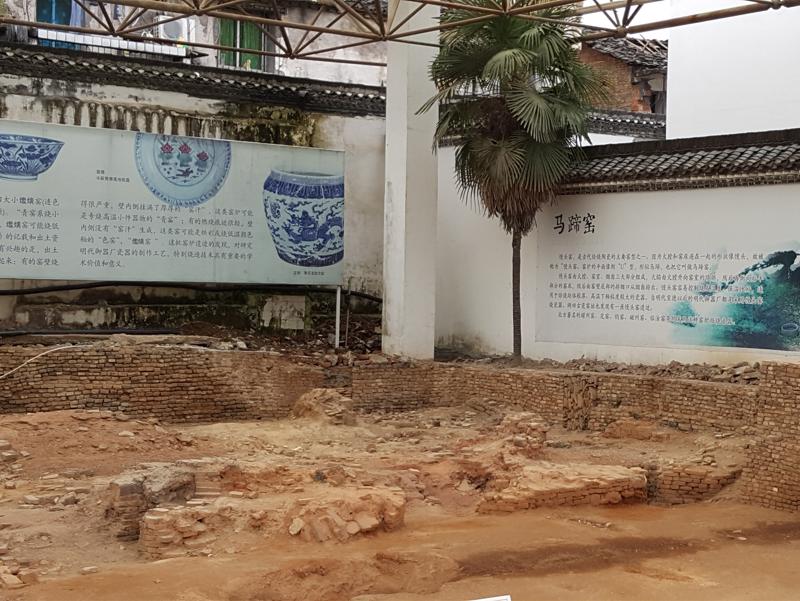

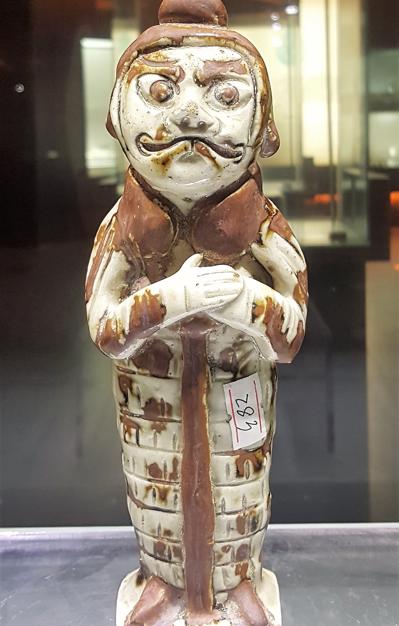
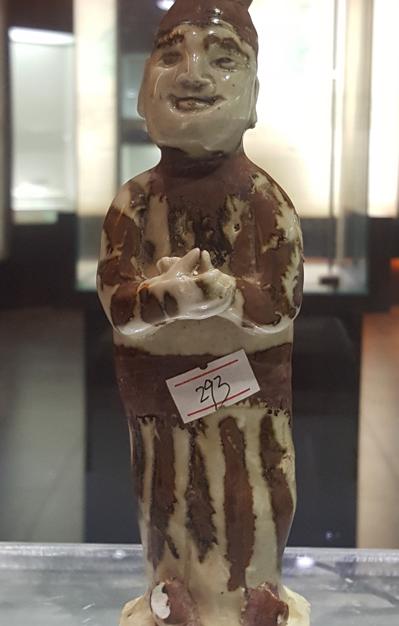

We leave for lunch. Sam, Peter, Carl and Ting-tiang walk along the street with the Professor to a special restaurant; the ladies follow from behind. The restaurant is so calm and simple, it has a good atmosphere. The Professor treats us to lunch. The heat and humidity is forgotten. The food is tasty, the tea is good, the spirit in the group is high: the Professor and the students make us eat all the food. Chopsticks by this time are like fingers for me. Bente jokes with Sam, Truke looks with wide eyes into my video lens. Carl talks with the professor. about Fra Angelico and Botticelli.
After lunch, unfortunately, we have to wave good-bye to the professor and his students; the bus drives off into the city’s heat of the afternoon. The Jingdezhen Imperial Kiln museum with the Longzhu Pavilion, also called Dragon Pearl Pavilion, is our next stop. The Pavilion stands on the top of the Zhushan Hill in the middle of the downtown area; this area used to be a place for trading goods, such as porcelain, during the Ming and Qing periods. (Please refer to the travel diaries of Jan-Erik Nilsson for more info on this kiln site: http://www.gotheborg.com/~gothebor/travelreport/jdz92/jdz92_arrtojdz.shtml)
The imperial court of the Ming and Qing dynasties built imperial kilns, on this hill, following the Yuan example and assigned a court official to supervise the production of the porcelain objects, made for the exclusive use of the royal family. The Dragon Pearl pavilion on the hill became a symbol of the imperial kilns and is now a landmark of Jingdezhen. On the museum grounds we pass a major excavation site; this was the imperial kiln factory site. The information for visitors to the museum is written in Chinese, unfortunately. In any case blue-and-white was made here since the Yuan; some pictures are shown of Jingdezhen blue-and-white jars, one with a dragon on it, with five claws. The five claws indicate, that this porcelain was
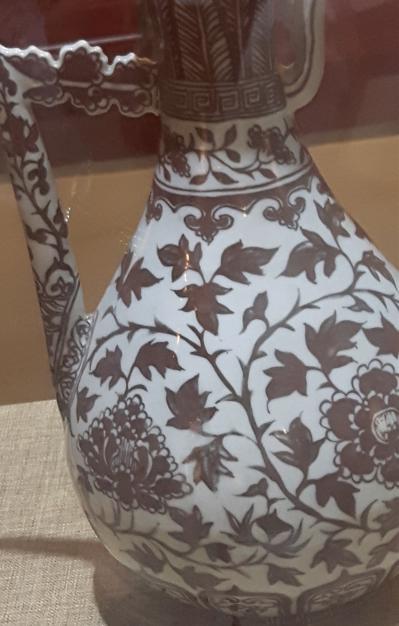

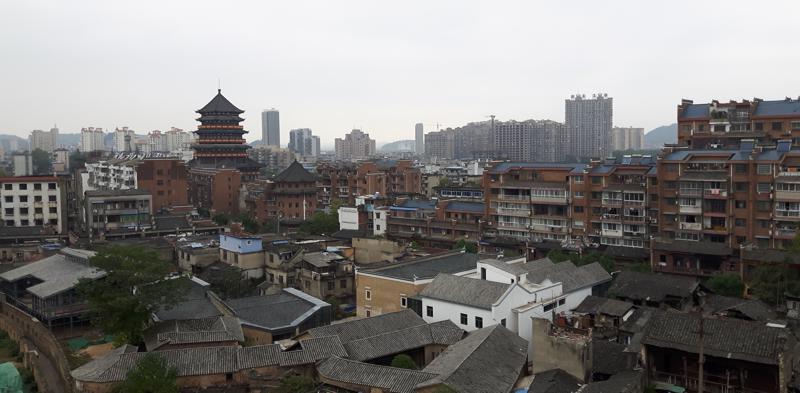

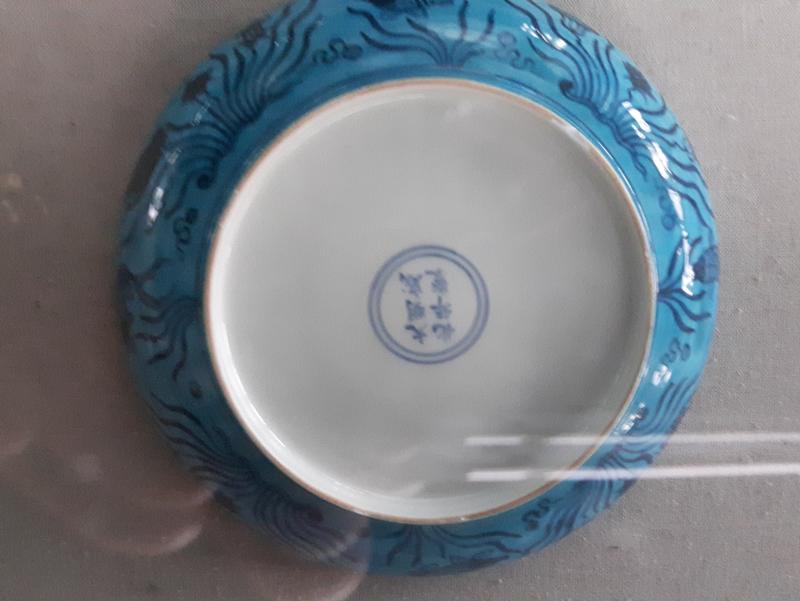
destined for the Emperor. We continue along the lanes on the premises of this imperial Kiln museum; we pass by a temple used for offerings to the porcelain God. In the temple, there are several statues which honour the people who worked so hard for the porcelain industry; one of the statues represents a kaolin worker. On the excavation grounds outside we get to see plenty of precious porcelain and sherds which were found here. Scientists such as Professor Liu Xinyuan and Jian Jianxin have researched those pieces and published their discoveries for the archeological world.
Back in the museum, we are impressed once more; a celadon glaze bowl with mouth-shaped rim and drum belly from the Five Dynasties; Song pillows; Song terra cotta figurines; white and blue jars with a straight rim; a glazed bowl, white on the inside and blue on the outside made during the Song. Beautiful objects.
Onwards we go to the pagoda, which has Ming and Qing porcelain is on show, even chicken cups and s ewer painted in underglaze red. It looks like the ewer in the Percival David collection in the British Museum, made in the Hongwu period of the Ming Dynasty. It was extremely difficult to fire these underglaze red colors at high temperatures. There is a peacock green saucer with fish and seaweed decoration from the Xuande period of the Ming Dynasty.
The Pagoda has several floors, at the top the view is great - we are in the middle of an old Ming and Qing trade neighborhood. From the

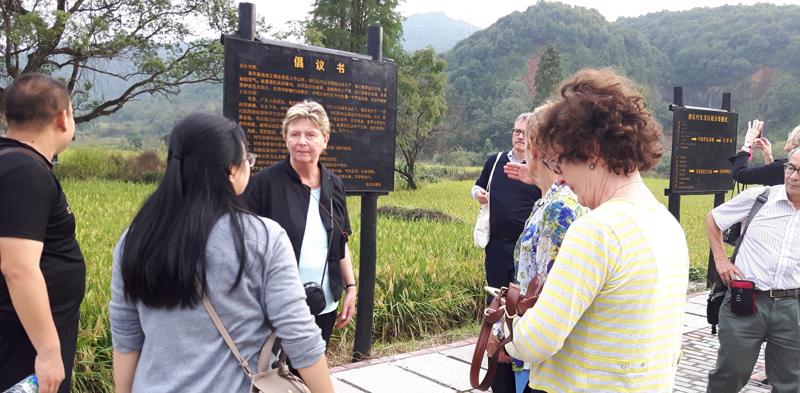
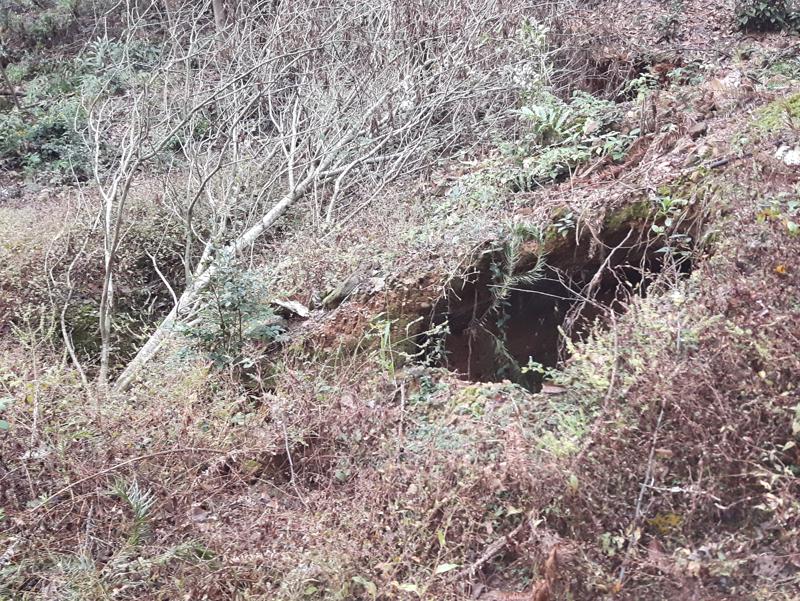
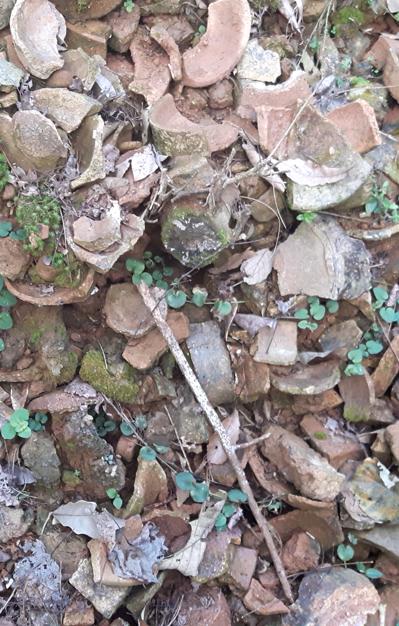
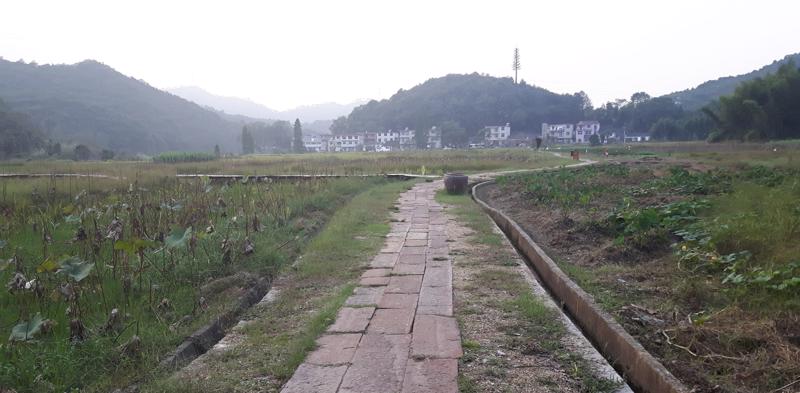
top of the pagoda, I try to find the Nan he river, the river running through Jingdezhen; I see the excavation sites; some old houses – but some modern high rise buildings in the background probably block my view of the Nan he river. At the gate of the museum, excavations in a plot of land are still ongoing. Truke and I feel sorry for the excavators, working so hard in the heat, but we are a little bit jealous too: we’d like to hear from them about their findings!.
Back in the bus we drive through the flowing mountainous landscape for about an hour to a village named Jinkeng, at the eastern outskirts of Jingdezhen. This place is special for its history: it was he source of (export) supply of Jingdezhen’s best quality China stone during the Song. Jingdezhen became important for the production of porcelain during the Yuan, when kaolin was added to the recipe for making porcelain.
We look up to the Qinglong Shan Green Dragon mountain, named as one of the eight best sceneries of Xianghu. Jinkeng is comparable maybe to French villages, tugged away at the foot of a mountain. The village is surrounded by other mountains and rivers; the flat areas are used as organic rice fields and organic vegetable gardens. The view over the rice fields against the mountainous landscape is exquisite.
The lady who guided us with the Professor this morning is here again too: she travelled with her own car to the village and now, she welcomes us again and takes us to an interesting old kiln in the middle of the woods, on the slope of the mountain. This is the Guoshanxia kiln site, used during the Song Dynasty.
We sit down for a while at a terrace of reconstructed water mills; where china stone still gets crushed. At this altitude, we enjoy the clean air. Green, lush vegetable and rice fields surround us. T
The old route back to the village is embedded with stones from centuries back; this is the Millennium china stone route we walk on.
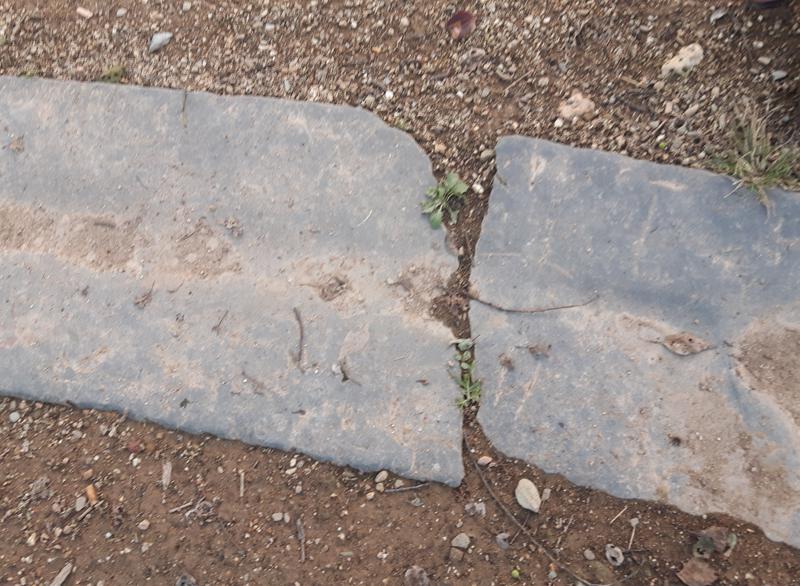
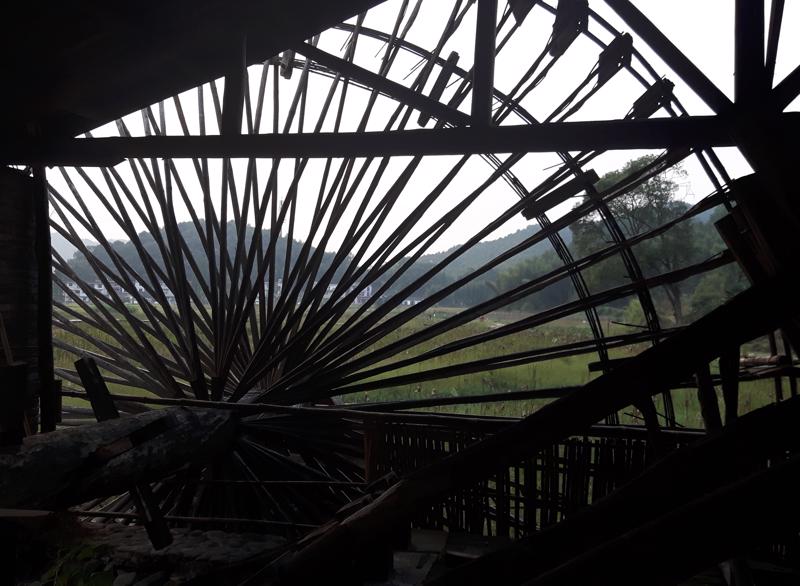

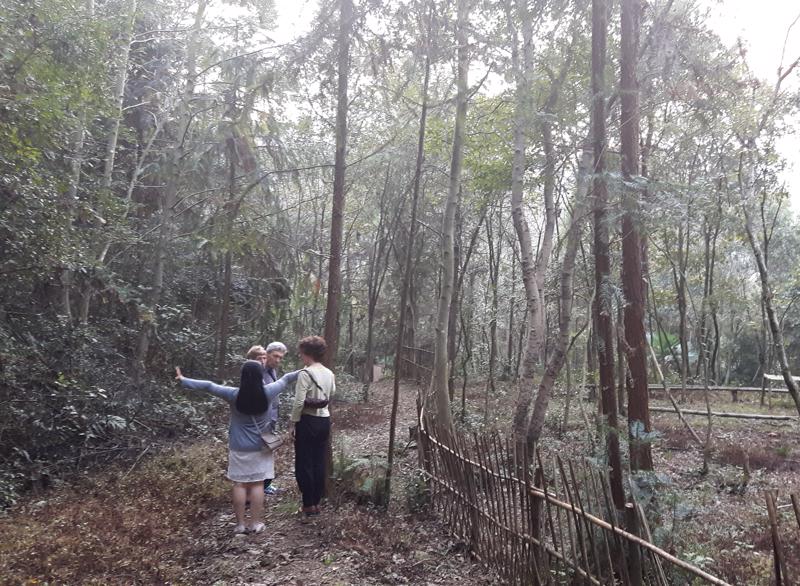
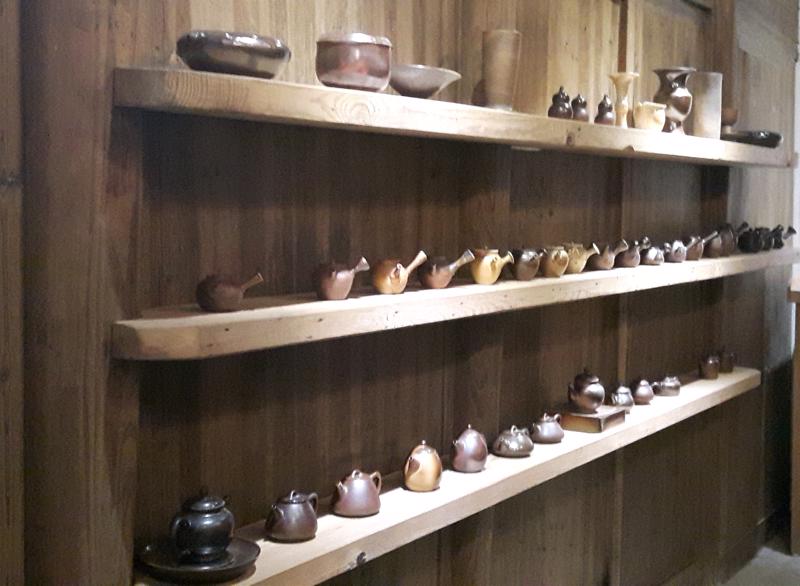


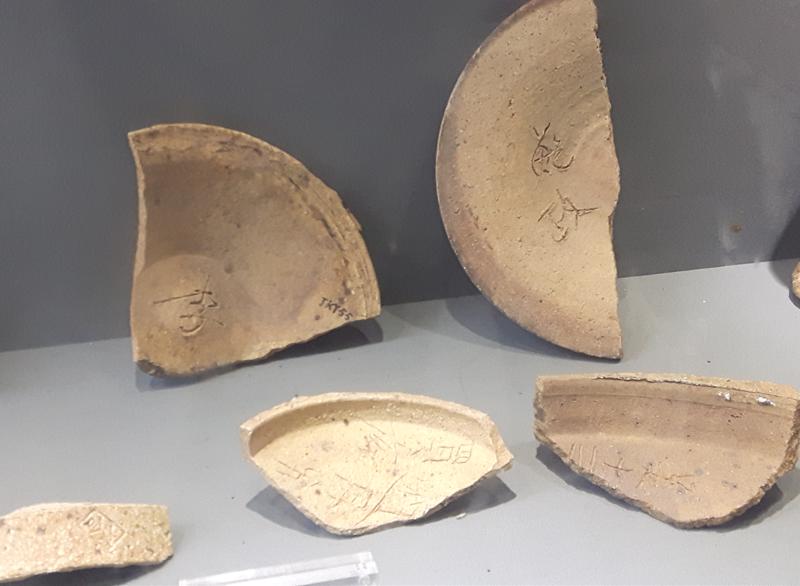
From the china stone mines, massive amounts of Jin Keng china stone bricks were carried with a wheelbarrow over this trail to the kilns. In the Northern Song in 1004 CE (first year of the Jingde reign) the Emperor Zhenzong coined Jingdezhen for its high quality of Qingbai wares produced there. Qingbai ware was key for Jingdezhen to become very successful over the centuries with its porcelain industry. The important role of JinKeng in the last millennium is obvious: enormous supplies of china stone were excavated, and there were lots of watermills along the river to crush the china stone.
We also visit the village’s tiny Museum. Visitors are informed that in the “Taoji “ – the first important record on porcelain, by Jiang Qi - china stone from Jinkeng was described as having the superior quality, better even than the stone from Hukeng, Lingbei and Juetian!
Before the Yuan in the 14th century, porcelain was made solely from china stone, according to the mono recipe. After that, kaolin and china stone were mixed; this mix is used for the dual recipe for porcelain. We learn, that, at the Hutian kiln site complex in Jingdezhen, fire testers with Jinkeng inscriptions were found by Mr. Liu Xinyuan. The tests contributed to the quality of the qingbai ware, a fact which was verified by the excavations from kiln sites such as Youzhawou and Cangwu.
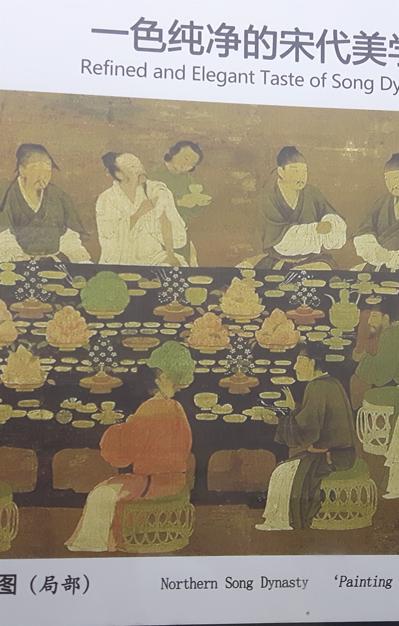

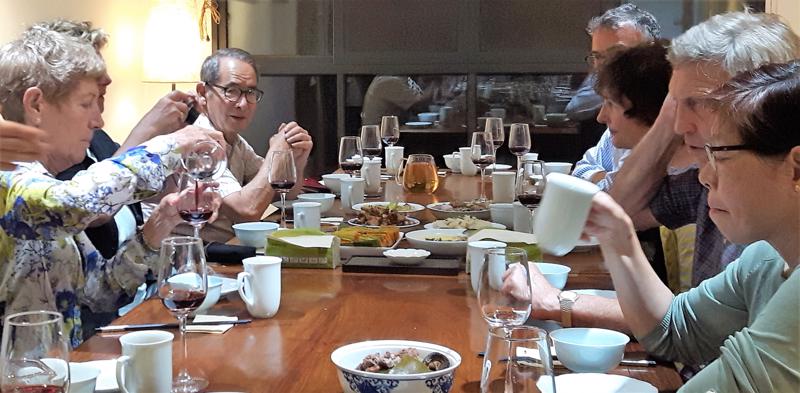
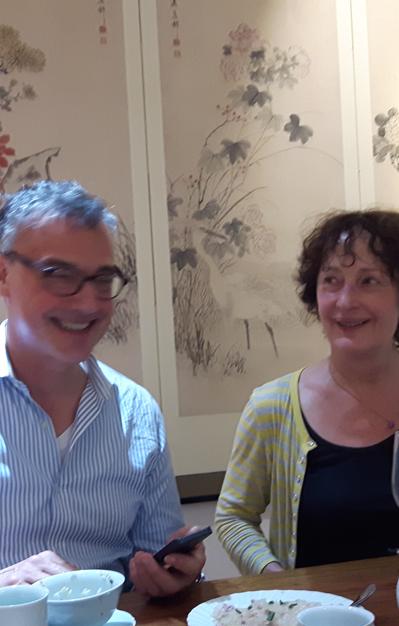
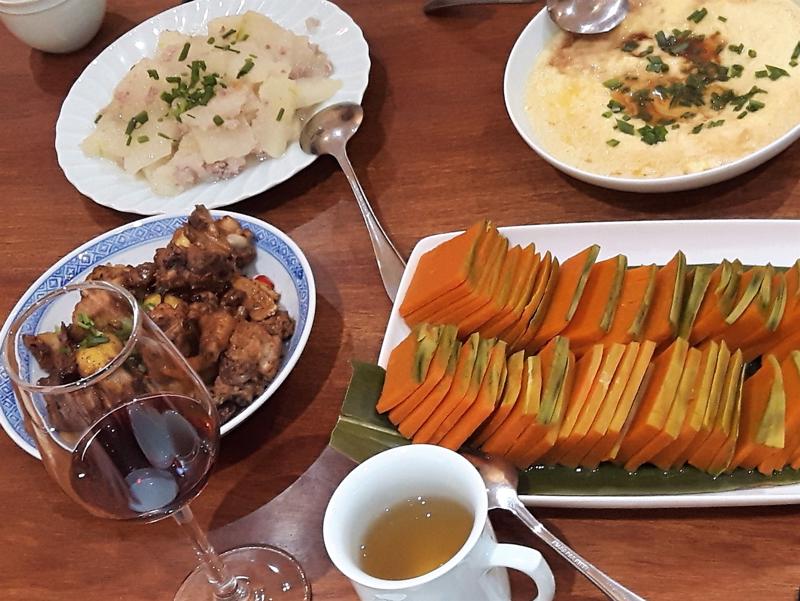
We also visit a small shop next in the museum and a workplace with a small kiln. Cats and kittens sleep among the teapots and wares on the table. Every pot has it’s own style. Under the table, I see a white, fluffy dog, asleep as well. For some dumb reason, I am too absentminded to buy one of those nice teapots.
May Huang (Huang Wei) from the Jingdezhen School of Ceramic Art makes her apearance in the village at dusk. The heads of the villagers turn when she passes by. Carl recognizes her instantly and invites her to join our group. She looks very distinguished!
We continue on foot to the Jinkeng Dongjiao Community Centre; geese accompany us on our walk to this three storey building. At the top floor of the Dongjiao Center a delicious dinner is served to us, with vegetables and pumpkin cake. Another festive dinner in a special place - it is a nearly holy location for us: just about a year ago Rose Kerr gave a lecture exactly in the same place. The Percival David foundation supports Dongjiao Center, because of the critical
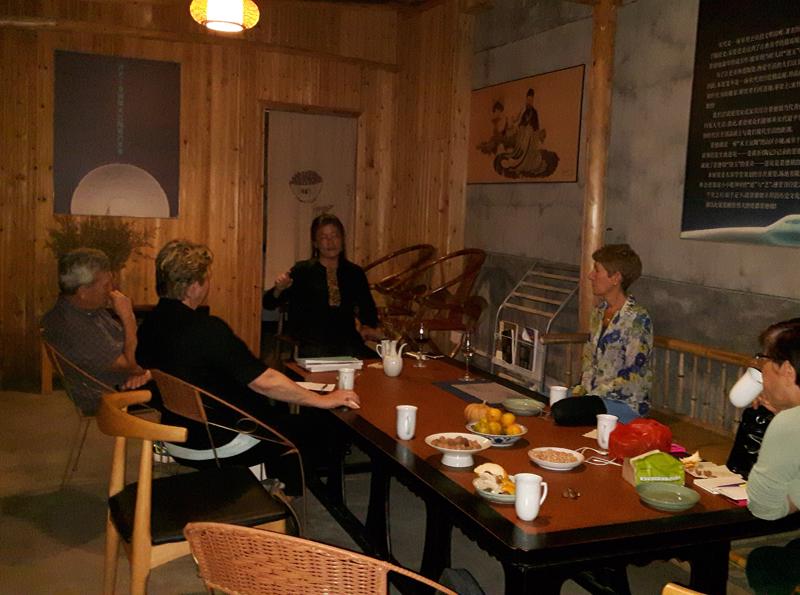

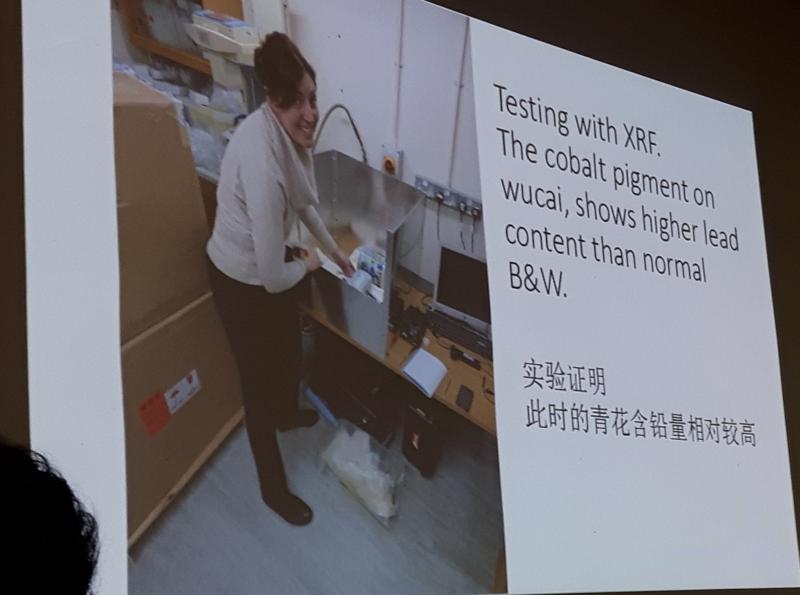
role Jinkeng plays in the history of porcelain.
All of a sudden, a potter sits next to me; unfortunately I am not speaking Chinese, and probably because it is very warm, he looks like a dream with his soulful face, a white beard and soft eyes. A Merlin magician look alike. Peter tells me, that we will be paying a visit to the workshop of this man in the next days.
After dinner, tea is served on the terrace of the first floor; it is pitch dark around us; silence reigns in the village. Our porcelain London University Professor talks about porcelain: Sam, Marion, Bente, Christine and Wai Lan all ask her a lot of questions. A proto type Song ewer white and blue stands in front of her on the table…it looks Qingbai. It could not have been produced without Jinkeng china stone.
On the ground floor, Sam will give a presentation on 17th century enameled porcelain to experts and the general public. Chairs are lined up, cats purr and dogs stay around when the light goes down. The screen goes up and the presentation starts. Sam looks at ease and in his element speaking to the audience. Marion waves at him, she is so proud of him. Sam and Marion did courses in London on e.g. how make Wucai and blue figures on porcelain, underglaze or

overglaze. Sam’s talk is translated into Chinese by the famous porcelain professor May Huang (Huang Wei); Jiajing, Chenghua and color-studies are discussed as well. The audience listens with great interest. Even though we are still sweating down our backs, the physical is neglected; intellectually we are inspired.
Sam talks porcelain and celestial discoes on a very hot evening in Jinkeng.
A student named William from the Havana (Cuban) University is here as well. He is probably one of the few people from Havana studying porcelain and has been living here in Jinkeng for a while; his girlfriend will come over soon. After the presentation, a lot of questions are asked by the audience to Sam and the professor. Then, wine is served.
Sam and Marion were real stars. The village is left behind by us in the dark with its villagers, researchers, students; china stone, millennium trails, water mills, kilns, museum; wine, tea and organic fields.
William is with us in the bus, he will be dropped off somewhere nearby Jenking. He talks about what it is like to live here.
In a quiet corridor in the hotel I practice standing on my head again - still difficult! The shower and tea are great. All is going well at home with Pieter (so glad he is doing well); I try to write but fall asleep. Another lovely day has passed.
Get started right away!
What are you waiting for? Capture your adventures in a digital diary that you can share with friends and family. You can switch between any of your devices anytime. Get started in our online web application.
